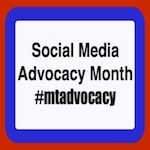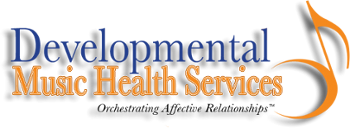 Since 2005, the American Music Therapy Association and the Certification Board for Music Therapists have collaborated on a State Recognition Operational Plan. The primary purpose of this Plan is to get music therapy and our MT-BC credential recognized by individual states so that citizens can more easily access our services. The AMTA Government Relations staff and CBMT Regulatory Affairs staff provide guidance and technical support to state task forces throughout the country as they work towards state recognition. To date, their work has resulted in 35 active state task forces, 2 licensure bills passed in 2011, and an estimated 10 bills being filed in 2012 that seek to create either a music therapy registry or license for music therapy. This month, our focus is on YOU and on getting you excited about advocacy!
Since 2005, the American Music Therapy Association and the Certification Board for Music Therapists have collaborated on a State Recognition Operational Plan. The primary purpose of this Plan is to get music therapy and our MT-BC credential recognized by individual states so that citizens can more easily access our services. The AMTA Government Relations staff and CBMT Regulatory Affairs staff provide guidance and technical support to state task forces throughout the country as they work towards state recognition. To date, their work has resulted in 35 active state task forces, 2 licensure bills passed in 2011, and an estimated 10 bills being filed in 2012 that seek to create either a music therapy registry or license for music therapy. This month, our focus is on YOU and on getting you excited about advocacy!
Advocacy is all Part of the Gig…
Advocacy is vital to the future of music therapy. It helps to inform communities, clinical sites, potential founding sources as well as the consumers. In addition, it helps in sustaining enrollment in music therapy degree programs. As a profession, it is our obligation to ensure that the public understands the value of music therapy. How can we ensure that the future will include the profession of music therapy? How can we ensure that the music therapy job market will exist and be able to keep up with the graduating music therapists of today and tomorrow? Can we be certain that funding sources for music therapy will be available in the future? Or that music therapy degree programs will thrive and grow in the future? To that end, we need to ask, as a profession, can our voices sustain themselves while inspiring others to sing in order to make certain that we (music therapy) have a sound future? How can we do so? – Advocacy
In our work as music therapists we advocate every day by doing what we do: engage our clients in musical experiences, educating and supervising future music therapists, engaging in research opportunities, publishing and the list goes on and on. We do it (advocacy) with every note we play, each melody we sing and every life that we help to enrich through the power of music therapy! That being said, it’s so important for us to bring the work, the stories, the tales, e sights and the sounds into the ears and eyes to others.
What is the State Recognition Operational Plan and why is it important to music therapy?
The State Recognition Operational Plan is a national initiative being implemented jointly by CBMT and AMTA to obtain state recognition of music therapy and the MT-BC credential. This collaborative effort between AMTA Government Relations staff and CBMT Regulatory Affairs staff provides guidance and technical support to state task forces throughout the country as groups of music therapists work toward recognition as defined by their particular state.
The Plan involves increasing awareness of the music therapy profession and of what it means to be board-certified. The ultimate goal is that, in all situations, the MT-BC be a minimum requirement as a service provision in every work setting.
Can I Advocate? Do I have the Time?
Advocacy can happen anywhere at any time at every level, from grassroots in your community to state agencies and governors to national legislators. In fact, any opportunity and conversation is a way to advocate for the profession. Each day when we walk through the doors of our work place a new possibility for advocacy waits. Whether it’s dropping off brochures at a neighboring office, providing an in-service, trading a guitar lick with an MT colleague, training a MT student, having an informal conversation with a school teacher or other colleagues, writing a quick post on Face Book or twitter, or simply having a chat with a parent of a child that you are working with advocacy is happening.
Vignette: Jason is a seven-year-old boy diagnosed with autism who has been participating in individual music therapy sessions for six weeks at The Rebecca Center for Music Therapy. Following Jason’s sixth assessment session, a parent meeting is scheduled to discuss the assessment findings and develop an intervention plan. During the parent meeting, the therapist, Michael, prepares a video presentation and a written assessment report. Michael begins the meeting by orienting mom and dad on the Center’s overall music therapy approach within the context of their son, Jason. He also reviews and orients mom and dad to the assessment protocol, operational definitions, scoring system and the treatment planning process. In addition, Michael provides mom and dad with a verbal overview of how Jason has been doing throughout the first six assessment sessions during his music therapy sessions. Mom and dad appear to be interested and attentive while they listen, however, asking no questions. Michael then presents the parents with a series of clinical video vignettes. Mom and dad are fixated on the computer screen waiting for the video to play, seeming almost nervous of what they will see (this will be the first time that they actually see their son, Jason, in music therapy). The video plays. Within 30 seconds they begin to smile. Mom has tears rolling down her smiling lips. After the first clip, lasting about 3 minutes, both mom and dad, with full grins on their faces, express that they have never seen their son, Jason, so engaged in anything like he was on the video in music therapy (Hey, my music therapy friends, how many times have we heard that before?). After the video presentation, both mom and dad continue to point out how incredible it was to see Jason so connected to someone in a related and engaged manner. They both commented on how seeing Jason engaged in music therapy was like seeing an entirely different boy in the music room (if we music therapists had a nickel for every time those words were spoken we’d have a whole lotta nickels!).
As the parent meeting continued, Michael asked mom and dad about Jason’s other therapies. Mom explained that Jason has occupational therapy (OT) 3 hours per week, speech therapy (ST) 4 hours per week, Applied Behavioral Analysis (ABA) 15 hours per week and now music therapy (MT) 30-minutes per week. (Jason’s parents pay out of pocket his music therapy services while his other therapies are reimbursable by the school district). Mom stared at the ceiling for a moment and began to emphasize that if you add up all of the hours for the year (based on 40 weeks) that Jason is in therapy the breakdown would be:
Occupational Therapy = 120 hours
Speech Therapy = 160 hours
Applied Behavioral Analysis= 600 hours
Music Therapy = 20 hours
Michael and Jason’s dad both seemed amazed by the breakdown in numbers. Michael said, “ya know, I never thought of it like that before.” Dad replied with, “It’s amazing. Jason is in music therapy for only 30 minutes per week and he seems to get so much out of it in such a short period of time. ““Why it is it so difficult to find reimbursement for music therapy services when it clearly helps kids!”Michael replied, “That’s a great question, and I think that it’s one worth asking Jason’s district as well your friends and family. Parents can be terrific advocates for our profession.” Mom replies, “Yeah, absolutely. I think we need to have a conversation with the district this week.”
How many music therapists have experienced similar stories in which parents or colleagues from other disciplines are amazed by the work that we do? – Too many to even count!
Every minute of the day, throughout the globe, a music therapy session is enhancing the lives of countless individuals. It’s amazing! We are so lucky to be a part of this awesome profession.
It’s our job to ensure that tomorrow’s music therapists have their opportunities to work in music to promote health. The work speaks for itself. It speaks volumes. And we get to breathe it and sing it every day! Let’s get others excited about it, too…
Thanks for reading!
Oh, one more thing…if you have a minute, check out the Music Therapy Advocacy Quiz to see your advocacy profile.
